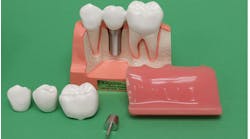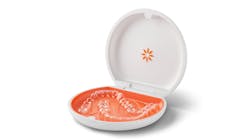Dr. Alon Preiskel is a prosthodontist in the UK who, midcareer, decided to get his MBA at the London Business School. He is the president of the American Prosthodontic Society and has a prosthodontic practice in London. He is also founder of the Collaborate Dental Group. He spoke about analytics in dentistry and what he has learned since delving into the business side of things.
Joshua Austin: In addition to being a practicing prosthodontist, you have a company that dives into practice data for analysis. Can you talk about that company and how that idea started?
Alon Preiskel: The ideas and vision for Collaborate Dental evolved out of business school, which I attended primarily out of academic curiosity. I wanted to have a taste of the world outside of dentistry. I was still teaching and practicing so I was somewhat optimistic when I added an MBA to my daily to-do list.
I learned that most of the problems in dentistry trace back to the fact that overall, we work individually and in competition with each other. This means most dentists reach a plateau in their careers due to a lack of resources as they try to do everything. Many dentists feel it is a lack of cash that is holding them back, but in fact dental practices have relatively good access to finance. Most often it is a lack of other resources that holds us back.
Very often we don’t really understand where we are trying to get to with our practice, let alone how that fits with our skills and personal ambitions. It is unsurprising, given that many of us spend most of the day in patients’ mouths, that after dealing with all the admin there is little time for anything else. Many of us haven’t had training or mentors to fully understand the stepping stones required to reach our goals or have the resources needed to achieve our ambitions.
In large organizations, there are experts who focus on their one role: business elements from marketing, product design to administration, accounting, and procurement. Collaborate Dental was founded to provide dentists the resources of being in a large organization while allowing their individual autonomy and professionalism.
You might also be interested in: The true impact of 3D printing
JA: As a dentist and practice owner, I identify with that plateau you’re describing. Where did you start with Collaborate Dental?
AP: We started developing various partnership and joint venture models for dentists but discovered that asking dentists, at least in the UK, to collaborate at that level was more difficult than I imagined. We have now built a platform to provide systematic in-depth analytics for our member practices that helps them define their long-term goals, create the path to get there, and then provide the support and guidance to enable them to take on that journey.
It is interesting to see how the DSO space has evolved in the US, with more and more DSOs embracing co-ownership models. Collaborate Dental has started to work with like-minded DSOs using our analytical tools to empower their dentists and staff, ultimately to provide better dental care to their patients.
JA: After analyzing data from the practices using Collaborate Dental, what have you learned that has surprised you?
AP: One thing that I have found surprising is that there seems to be no correlation between how well a principal understands their financial numbers and the practice’s financial performance. I’ve seen practices where every income and cost are checked every day but they are relatively unprofitable, and very profitable practices where they have no idea what’s going on financially.
It’s also quite surprising how many dysfunctional relationships there are in dental practices, even with staff who have been there for many years. Communication within the dental team is trickier than it might seem, and it’s fundamental for a successful practice.
I find it interesting that if I ask a practice owner what’s special about their practice, they will often say the same thing: “We provide high-quality care to our patients in a family environment.” Yet when you go into the practices, they feel very different.
JA: As a clinician, what have been some changes you’ve made in your practice based on analytics, either from your practice or from Collaborate Dental?
AP: My practice is a second-generation boutique practice, so the biggest hurdle was bringing in change to the very loyal staff, some of whom had been there for more than 30 years. By listening to them in detail and demonstrating the benefits of bringing in a more organized way of working, we managed to engage them in many changes as well as create space for new staff to do the things that the veterans didn’t want to do.
Doing the simple things very well makes a surprising difference to overall practice performance. Ensuring excellent communication with patients when booking appointments and recalls creates a significant uplift in practice performance. But getting the team to work so well takes time and the ability to truly engage everyone.
Understanding patients’ needs and what makes an ideal patient for our practice helped us focus marketing efforts and reach out to the patients that we wanted with the services they were looking for.
One of the things we looked at financially is the difference between a loss-leader and a loss-maker. Many practices, including my own, run by carrying out a whole variety of treatment, and at the end of the month or year you see how much profit you generated. But many of the treatments made little or no money. This analysis gives valuable insight into what kind of treatments to carry out and what to charge for them.
JA: That is great advice. Where can our readers find more information about you and Collaborate Dental?
AP: At our website or by contacting us with any queries at [email protected].
Editor's note: This article appeared in the July 2023 print edition of Dental Economics magazine. Dentists in North America are eligible for a complimentary print subscription. Sign up here.






